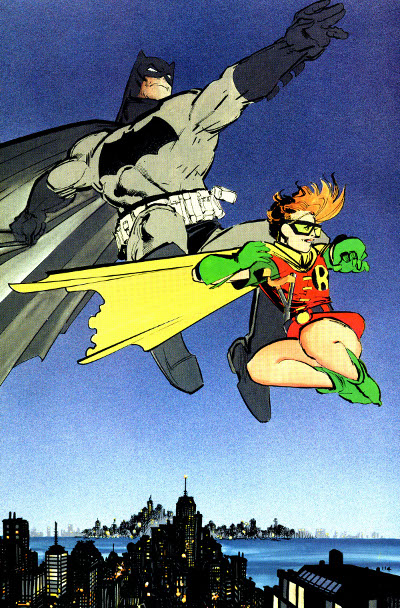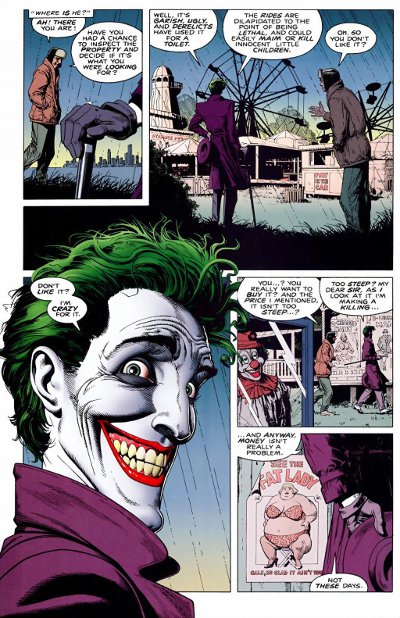Who would win in a fight: Captain America or Iron Man? Such speculation is a hallmark of schoolyard debate and can be a blast to discuss… in isolation. The problem with trying to execute this as part of a larger narrative is that you need to come up with a convincing way to pit two heroes against one another. This often leads to amusing enough sequences that don’t make much sense when seen in context. My least favorite parts of the The Avengers are the scenes where our heroes are bickering or outright fighting. Take the Iron Man versus Thor sequence (with special appearance by Captain America). It’s a lot of fun to watch! But why are they fighting? Mostly so Thor can shoot lightning at Iron Man, which will have the unexpected consequence of supercharging the suit. Or to ponder the age old question of what happens when Thor’s hammer Mjolnir meets Cap’s vibranium shield. It doesn’t really serve the story, but again, it’s fun and even a little clever. It’s certainly a step above anything in Age of Ultron. The scene with the Hulk Buster? I got very little out of that. I gather that my opinion on this isn’t the most common, or at least that most true comic book nerds are much more into the idea, as it’s clearly a time-honored tradition derived from the comic books themselves. It’s just the sort of thing that bounces off of me.
All of which is to say that Marvel’s latest, Captain America: Civil War, has its work cut out for it. Truth be told, I was not enamored with the idea behind this installment in Marvel’s grand shared-universe experiment. But I have to respect their willingness to take chances, and they’ve done a remarkable job thus far, so it’s hard to count them out. I’m pleasantly surprised to report that Marvel’s done it. This movie is a stunning juggling act. Not a perfect one. Like, they dropped a few elements but were able to desperately flail their legs to kick them back up in the air before they fell to the ground. The sort of thing that Olympic judges will tut-tut and say oh, that will cost them a 0.1 score reduction while the rest of us just marvel (pun intended!) that this athlete managed to save an awkward situation. They still end up with a great score and maybe even metal, but it’s not one for the record books. Ok, I think we’ve beaten this metaphor into the ground.
The success is mostly due to the philosophical conflict at the center of the film. It’s a situation where you can empathize with both sides of the argument and indeed, there isn’t really a good answer. It’s confronting one of the core issues with superhero stories in the first place, which is that so many of these characters are essentially vigilantes. Right around the time Marvel was just getting started, there were a bunch of comic book movies that were tackling this problem head-on. For instance, The Dark Knight took a very pragmatic view of Bruce Wayne’s plan. As Harvey Dent opines:
You either die a hero, or you live long enough to see yourself become the villain. Look, whoever the Batman is, he’s looking for someone to take his place. He doesn’t want to do it forever.
Because who could do it forever? When you place yourself above the rule of law, you will inevitably yield unfavorable consequences. The Avengers certainly have. Of course, they were initially government sanctioned, which makes some of the complaints in this film a little hypocritical. They talk about New York as if S.H.I.E.L.D. didn’t put together the Avengers in the first place. Then again, Age of Ultron really saddles this film with distinctly unheroic collateral damage that would undoubtedly lead to widespread distrust of these heroes. So Tony Stark’s guilt and plan for some sort of oversight is an understandable perspective (and an interesting evolution of his character since his first appearance). For his part, Steve Rodgers’s hesitation to submit to this constraint is perfectly cromulent when you consider his role in exposing the corruption of S.H.I.E.L.D. The film isn’t perfect in the execution of this debate, but it does actually make room for the discussion. It takes the ideas seriously and doesn’t flinch at the complexity. It does, perhaps, let the fisticuffs fly a bit too quick to be convincing, and the tone gets yanked around quite a bit. Again, Marvel is incredibly good at this, so the tonal inconsistencies are handled deftly enough to escape too much scrutiny.
This movie is stuffed to the gills, something that usually dooms a movie into incomprehensibility. Most superhero franchises fall into this trap at some point, incorporating extra villains and side characters and franchise-service until the entire narrative collapses in on itself. The list of culprits is long and distinguished. Joel Schumacher’s Batman films, Spider-Man 3, X-Men: The Last Stand, and most recently and relevantly, Batman v Superman: Dawn of Justice*. Civil War has all the elements necessary for its implosion, but has somehow, improbably, made it all work. I don’t know how they did it, but I’m really glad they did.
To be sure, a lot of this movie is not strictly necessary. But most of those extraneous bits are so entertaining that who would ever want to remove it? Take Spider Man. He’s one of the main highlights of the movie! The character is handled perfectly. Distinct from previous filmic incarnations, but from what I can understand, very true to the character on the page. And yet, he’s completely superfluous. Having Tony Stark recruit him is handled well… so long as you don’t start wondering why he invited an unproven teenager to a giant superhero battle. Speaking of which, like, half of the folks involved in that battle don’t have a particularly good reason to be there. Well, not half, but why is Hawkeye there? Why is Ant-Man there? Wait, I get the disagreement, but why are they fighting again? Maybe instead of this infighting, Marvel could just come up with a decent villain for once? But I digress.
Ultimately, the plot of this movie doesn’t quite hold up under the close scrutiny of Hitchcock’s refridgerator. In particular, the plan of the master-manipulator working behind the scenes to foment this conflict is quite obtuse. Then again, who cares? The set piece at the airport is so damn entertaining that it’s hard to fault of the movie for bending over backwards to get us there. The ultimate motivations of this villain are surprising and thematically relevant. The whole movie embraces a smaller-scale battle of wills and fisticuffs rather than powerbeams into the sky, invading armies, or explodey bits (well, alright, there are plenty of explodey bits). This is refreshing and genuinely involving. You don’t want these characters to be fighting, but you can understand why. You might not even particularly agree with either of them, but you can see where they’re coming from and fill in some blanks on your own.
So the movie is overstuffed, but most of this stuffing is still great. We get a nice introduction to Black Panther, a sorta mini-origin story and actually, he’s one of the few characters to really undergo a character arc and where he ends up is more heroic than most of our other heros. As Black Panther, he’s maybe a bit underwhelming, but Chadwick Boseman’s performance, especially when under the T’Challa persona, makes a lot out of a little. He will be served well in his own film. I’ve already mentioned how great Spider Man is, but can we just bask in how great he was during the airport set piece? His nervous quips and clear love of all the Avengers (even the ones he’s fighting) come through strong, and he has some of the best lines in the movie. Speaking of quips, Paul Rudd’s Ant-Man shows up and it speaks to his charisma that we’re so glad we’re watching him that we don’t really question why he’s even there until after the movie. He’s so enamored with all the Avengers, and he gets some really good moments to shine. It’s revealed that Emily VanCamp’s character from the previous film is actually Sharon Carter (niece of Peggy Carter), which leads to a shoehorned romantic subplot for Cap that is simultaneously a long time coming and also a bit rushed and awkward… but totally worth it for the reaction shot of Bucky and Sam. Speaking of which, Bucky and Sam’s interactions are absolutely great. There’s not quite enough of it to really enter Laurel and Hardy slapstick territory, but what we get is great. I’ve mentioned the villain Zemo’s absurd plan, but Daniel Bruhl plays him well enough that we think less about the plan than about his motivation.
Jeeze, I could probably spend a few thousand more words enumerating all of the little moments I loved in this film, Chris Farley Show style, but in the interest of time, I will leave it at that. If you have enjoyed any of the Marvel movies thus far, you will enjoy this one. Certainly a big step up from Age of Ultron (which attempted and failed at many of the things this movie succeeds at), and they managed to take a premise I wasn’t really on board with and make it work to an extent I would have never guessed possible. It is basically an extended playing-in-the-sandbox excuse for pitting superheroes against one another and coming up with clever ways for superpowers to interact, but is so good at it that you can’t help but be won over by the sheer audacity and skillful execution on display. The thematic heft at its core provides depth, but the movie doesn’t quite descend into overly grim and gritty territory. It ends with some things unresolved, but in a totally satisfying way.
When Age of Ultron came out, I mentioned that Marvel was really leaning into the comic-bookeyness of this whole endeavor. It’s one of the reasons we can so easily forgive how overstuffed this movie is. Sure, Black Panther wasn’t given that much to do… but he’ll have plenty to do in his own movie at some point (and with Ryan Coogler at the helm? I think we’re all on board with that!) We’re going to see most of these characters again, and probably sooner rather than later. I also opined that: “The never-ending serialized nature of comic books are coming to the screen, fraught with all the attendant baggage that entails.” With Age of Ultron, I was seeing the strain. With Civil War, I’m seeing the opportunities, even if I still find the whole Civil War concept a bit dubious. In the immortal words of that great philosopher, Axl Rose, what’s so civil about war anyway?**
* This is the actual title of the movie. Someone actually thought that up, and then more people actually approved it and put hundreds of millions dollars behind it.
** Seriously, though***, wouldn’t it be awesome if they played that song at some point?
*** Ok, not seriously, that’s a terrible idea, I’m the worst.

